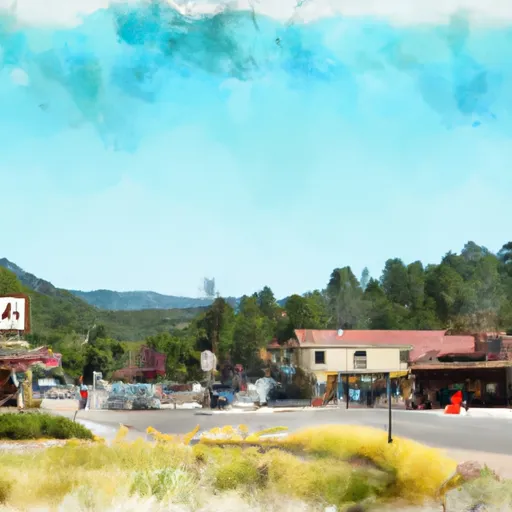-
 Snoflo Premium
Snoflo Premium
Get unlimited access to all our content
With no Ad interruptions! - Start Your Free Trial Login with existing account
Big-Oak-Flat
Eden Index
Climate
10.0
•
Recreation
6.6
•
Community
2.3
•
Safeguard
6.9/10

Big Oak Flat is a small community located in the Sierra Nevada foothills of California. The climate is typically Mediterranean, with hot, dry summers and cool, wet winters. The area is home to several hydrology constituents, including the Tuolumne River, which provides drinking water and recreation opportunities. Outdoor recreation is a popular attraction in Big Oak Flat, with opportunities for hiking, camping, fishing, and swimming in nearby parks such as Yosemite National Park and Stanislaus National Forest. Other popular activities include rock climbing and mountain biking. Overall, Big Oak Flat is a beautiful destination for those seeking outdoor adventures and natural beauty in California.
What is the Eden Index?
The Snoflo Eden Index serves as a comprehensive rating system for regions, evaluating their desirability through a holistic assessment of climate health, outdoor recreation opportunities, and natural disaster risk, acknowledging the profound impact of these factors on livability and well-being.
Climate Health Indicator (CHI): 10.0
Big-Oak-Flat receives approximately
873mm of rain per year,
with humidity levels near 60%
and air temperatures averaging around
14°C.
Big-Oak-Flat has a plant hardyness factor of
8, meaning
plants and agriculture in this region tend to thrive here all year round.
By considering the ideal temperature range, reliable water supplies, clean air, and stable seasonal rain or snowpacks, the Climate Health Indicator (CHI) underscores the significance of a healthy climate as the foundation for quality living.
A healthy climate is paramount for ensuring a high quality of life and livability in a region, fostering both physical well-being and environmental harmony. This can be characterized by ideal temperatures, reliable access to water supplies, clean air, and consistent seasonal rain or snowpacks.
Weather Forecast
Streamflow Conditions
San Joaquin
Area Rivers
San Joaquin
Snowpack Depths
San Joaquin
Reservoir Storage Capacity
San Joaquin
Groundwater Levels
Recreational Opportunity Index (ROI): 6.6
The Recreational Opportunity Index (ROI) recognizes the value of outdoor recreational options, such as parks, hiking trails, camping sites, and fishing spots, while acknowledging that climate plays a pivotal role in ensuring the comfort and consistency of these experiences.
Access to outdoor recreational opportunities, encompassing activities such as parks, hiking, camping, and fishing, is crucial for overall well-being, and the climate plays a pivotal role in enabling and enhancing these experiences, ensuring that individuals can engage in nature-based activities comfortably and consistently.
Camping Areas
| Campground | Campsites | Reservations | Toilets | Showers | Elevation |
|---|---|---|---|---|---|
| Hacienda | 8 | 2,530 ft | |||
| McClure Point Rec Area | 100 | 920 ft | |||
| Fraser Flat | 38 | 4,754 ft | |||
| Hull Creek | 18 | 5,497 ft | |||
| Sand Bar Flat | 10 | 2,846 ft | |||
| Lumsden | 10 | 1,469 ft | |||
| Bagby Rec Area | 30 | 862 ft | |||
| Beardsley Dam | 16 | 3,450 ft | |||
| River Ranch | 38 | 2,508 ft | |||
| Lake McSwain Rec Area | 99 | 449 ft |
Nearby Fishing
Nearby Ski Areas
Catastrophe Safeguard Index (CSI):
The Catastrophe Safeguard Index (CSI) recognizes that natural disaster risk, encompassing floods, fires, hurricanes, and tornadoes, can drastically affect safety and the overall appeal of an area.
The level of natural disaster risk in a region significantly affects safety and the overall livability, with climate change amplifying these risks by potentially increasing the frequency and intensity of events like floods, fires, hurricanes, and tornadoes, thereby posing substantial challenges to community resilience and well-being.
Community Resilience Indicator (CRI): 2.3
The Community Resilience Indicator (CRI) recognizes that education, healthcare, and socioeconomics are crucial to the well-being of a region. The CRI acknowledges the profound impact of these elements on residents' overall quality of life. By evaluating educational resources, healthcare accessibility, and economic inclusivity, the index captures the essential aspects that contribute to a thriving community, fostering resident satisfaction, equity, and social cohesion.

